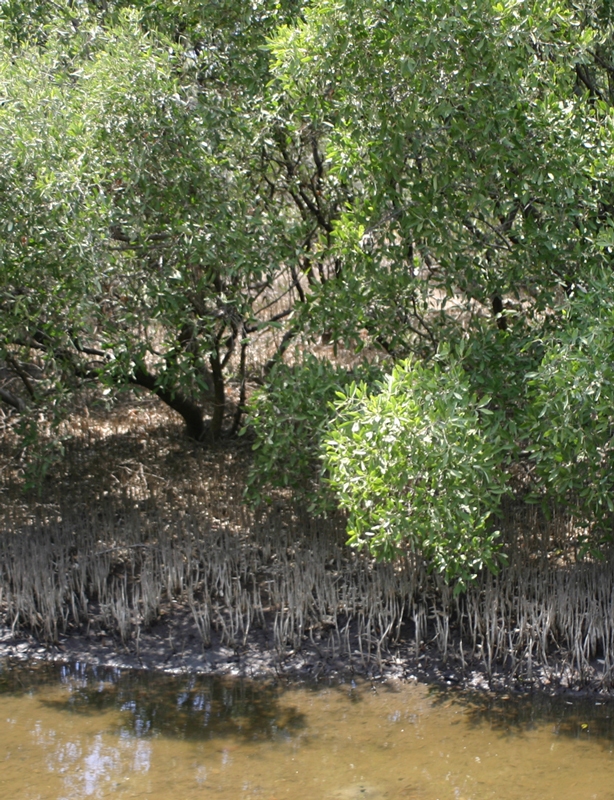- Avicennia germinans
Taxobox
name = "Black mangrove"

image_width = 240px
image_caption = "A. germinans" inGuanacaste ,Costa Rica
regnum =Plant ae
divisio = Magnoliophyta
classis = Magnoliopsida
ordo =Lamiales
familia =Acanthaceae
genus = "Avicennia "
species = "A. germinans"
binomial = "Avicennia germinans"
binomial_authority = L."Avicennia germinans", the black mangrove, plays a key role in the
mangrove ecosystem by trapping debris and detritus brought in by tides, and as feeding, breeding, and nursery grounds for many species of shellfish, fish, birds and other wildlife."A. germinans" grows in tropical and sub-tropical regions of the
Atlantic Ocean and theGulf of Mexico where it thrives on sandy and muddy shores that are exposed to the air at low tide and covered at high tide. It can grow to heights of 15 metres in the tropics, but becomes small and shrub-like at the northern limits of its range. Black mangrove is common throughout coastal areas of Texas and Florida and ranges as far north as southern Louisiana in the United States.Like many other mangrove species, it reproduces by
vivipary . Seeds are encased in a fruit which reveals the germinated seedling when it falls into the water.Unlike other mangrove species it does not grow on prop roots, but possesses
pneumatophore s that allow its roots to breathe even when submerged. It is a hardy species and expels absorbed salt mainly from its leathery leaves.It is referred to as the black mangrove due to the color of the trunk and heartwood. The leaves often appear whitish from the salt excreted at night and on cloudy days. It is often found in its native range with the red mangrove and the white mangrove. White mangroves grow inland from black mangroves which themselves grow inland from red mangroves. The three species work together to stablize the shoreline, provide buffers from storm surges, and provide feeding, breeding, and nursery grounds for a great variety of fish, shellfish, birds, and other wildlife.
Growth
The black mangrove grows just above the high tide in costal lagoons and
brackish water estuaries. It can reach 10-15 m in height (30 - 45 feet) although it is a small shrub in the northern (colder) extent of its range. The seeds germinate in mid-summer but may be seen all year on the trees. The seeds can remain viable for over a year once released.Wood
The heartwood is dark-brown to nearly black while the sapwood is yellow-brown. It has the unusual property of having less dense heartwood than sap wood. The sapwood sinks in water while the heartwood floats. The wood is strong, heavy, and hard. The wood is difficult to work due to its intelocked grain and somewhat difficult to finish due to its oily texture. Uses include posts, pilings, charcoal, and fuel. In spite of the fact that the tree grows in a marine environment, the dry wood is subject to attack by marine borers and termites. Like many species, Black mangrove contains tannin in the bark and has been used to tan leather products.
References
* cite book
last = Haehle
first = Robert
year = 1999
title = "Native Florida Plants"
publisher = Gulf Publishing Company
location = Houston
id = ISBN 0-88415-425-4
Wikimedia Foundation. 2010.
